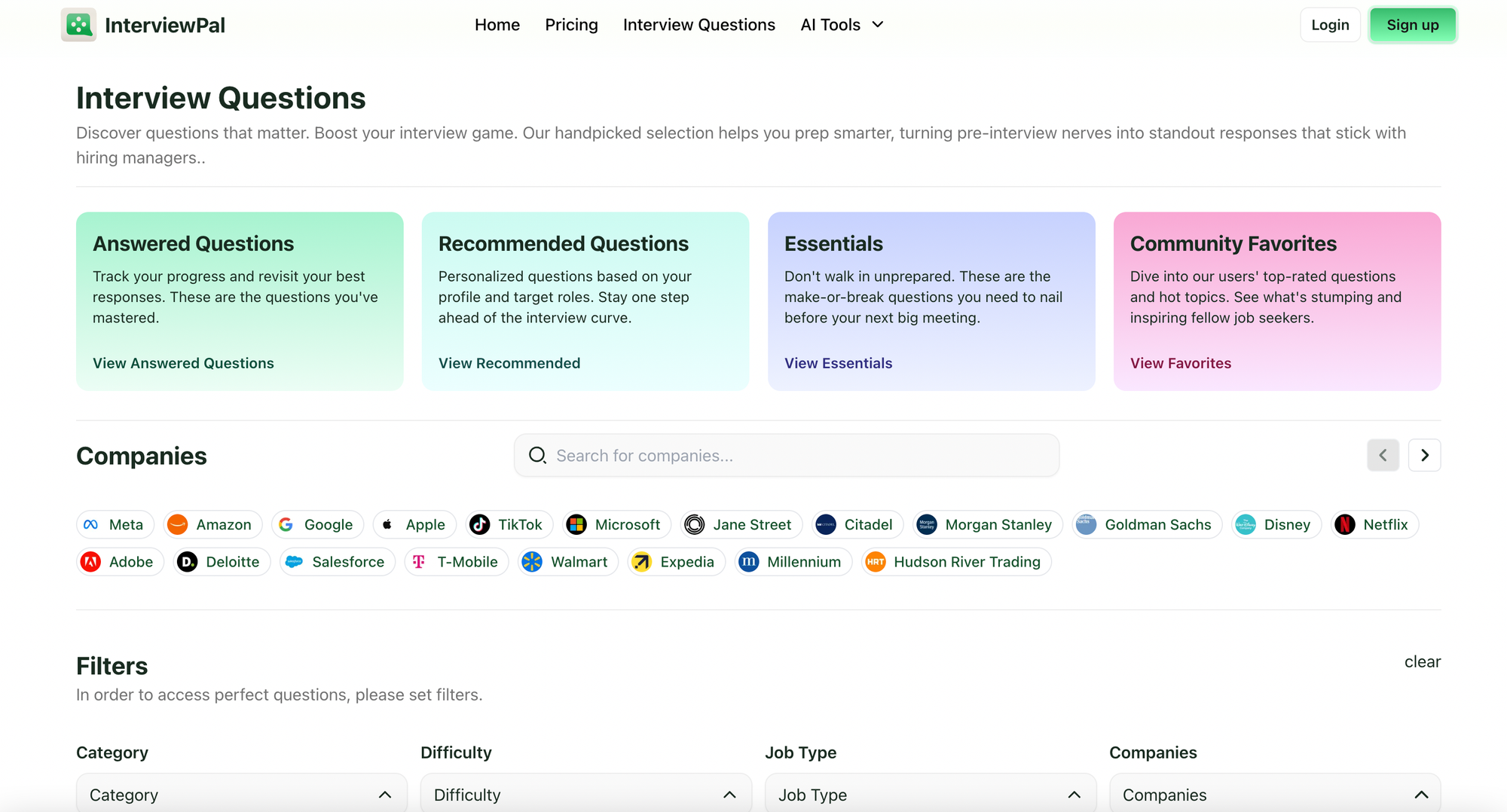"Tell me about working with others to achieve a goal."
Simple interview question, right? Yet this seemingly straightforward prompt trips up even seasoned professionals. I've sat through dozens of interviews where candidates dive into vague stories about "great teamwork" that leave interviewers checking their watches. But here's the thing: this question isn't really about teamwork – it's about your ability to navigate professional relationships to drive results.
Drawing from thousands of successful interviews in InterviewPal's platform, I've noticed that candidates who ace this question understand something crucial: collaboration stories need to be specific, strategic, and show both personal contribution and team success.
Why This Question Matters More Than You Think
In today's workplace, individual brilliance means little without the ability to work effectively with others. Companies aren't just hiring your skills; they're hiring someone who can multiply their impact through collaboration. This question reveals:
How you handle different working styles
Your approach to conflict resolution
Your ability to influence without authority
Your understanding of team dynamics
The Mistakes That Kill Your Chances
Before we dive into winning strategies, let's address the most common pitfalls that make interviewers wince:
- The "I Did Everything.." story you know the type – where the candidate presents themselves as the hero who saved the day while their team members play extras in the background. This screams "not a team player."
- The Vague Victory.. we all worked together and succeeded!" Great. But what actually happened? Lack of specifics suggests lack of real involvement.
- The Perfect Partnership.. stories without any challenges or conflicts feel fake. Real collaboration involves overcoming obstacles.
Role-Specific Strategies That Work
Different roles require different types of collaboration. Here's how to tailor your response:
For Software Engineers: Focus on cross-functional projects where technical and non-technical teams intersect. For example:
"I worked with our UX designer to optimize our checkout flow. While she focused on user experience, I identified technical constraints and opportunities. By establishing a daily 20-minute sync and creating a shared documentation system, we reduced cart abandonment by 31% and kept the project on schedule."
For Product Managers: Emphasize stakeholder management and your ability to align different teams toward a common goal:
"I led a project involving engineering, design, and marketing teams to launch a new feature. The challenge? Each team had different priorities. I created a shared impact framework that mapped everyone's objectives to user value, helping us make decisions that satisfied all stakeholders while delivering the feature two weeks early."
For Marketing Professionals: Show how you balance creativity with cross-team collaboration:
"Working with sales, we noticed a disconnect between our marketing messages and customer pain points. I initiated weekly feedback sessions with the sales team, using their insights to reshape our campaign messaging. Result? 24% increase in qualified leads and a stronger relationship between departments."
For Sales Roles: Demonstrate your ability to work with internal teams to serve clients better:
"I partnered with our product team to win a major account. Instead of just pushing for the sale, I arranged joint meetings where the client could speak directly with our technical experts. This collaborative approach not only won the deal but established a partnership model we now use for all enterprise sales."
The CRAFT Framework for Compelling Answers
Here's a framework that consistently works across industries:
C - Context: Set the scene briefly
R - Roles: Clarify your role and others' involvement
A - Action: Describe specific steps taken
F - Friction: Address challenges honestly
T - Triumph: Share measurable results
Example Using CRAFT:
Context: "Our team needed to migrate our payment system while maintaining 24/7 service."
Roles: "As the lead developer, I worked closely with our DevOps engineer and customer support lead."
Action: "I created a detailed migration plan, established clear communication channels, and set up automated testing."
Friction: "We discovered compatibility issues that threatened our timeline. I organized daily stand-ups to tackle problems quickly."
Triumph: "We completed the migration with zero downtime and improved processing speed by 35%."
Here's what success sounds like across different scenarios:
Handling Conflict: "When our designer and backend team disagreed on feature implementation, I organized a workshop where both sides could prototype solutions together. This turned potential conflict into creative problem-solving."
Remote Collaboration: "Leading a distributed team across three time zones, I implemented asynchronous communication tools and clear documentation standards. This improved our velocity by 40% despite never meeting in person."
Cross-Cultural Teams: "Working with our Singapore office required adjusting my communication style. I learned to be more explicit in requests and started documenting cultural context in our shared wiki."

How to Prepare for this Question?
- Map Your Collaboration Stories: Create a spreadsheet of your collaborative experiences.
Include:
- Project goals
- Team composition
- Challenges faced
- Specific actions taken
- Measurable results
- Lessons learned
- Tailor to the Role: Review the job description for collaboration hints. Are they looking for someone to:
- Lead cross-functional teams?
- Work with remote colleagues?
- Handle difficult stakeholders? Choose stories that align with these needs.
- Practice Different Angles: The same story can be told different ways. Practice emphasizing:
- Leadership skills
- Problem-solving abilities
- Communication techniques
- Cultural awareness
- Get Real Feedback
This is where tools like ours become invaluable. Our AI-powered mock interview platform analyzes your responses against successful examples from your target company, providing specific feedback on:
- Story structure
- Detail level
- Impact demonstration
- Areas for improvement
Beyond the Basic Answer
The best candidates use this question to demonstrate additional skills:
- Emotional Intelligence - Show how you read and responded to team members' needs.
- Strategic Thinking - Explain how the collaboration tied to larger business goals.
- Learning Agility - Highlight how you adapted your approach based on team feedback.
Our database includes thousands of successful collaboration stories, categorized by industry and role. InterviewPal helps you:
- Structure your stories effectively
- Focus on elements that matter most
- Practice with real interview scenarios
- Get immediate, actionable feedback
The platform's company-specific question bank ensure you understand how collaboration is valued at different organizations. What works at a startup might not resonate at an enterprise company.
What You Need To Remember Is That The Goal Is Impact
Ultimate success with this question comes from showing not just that you can work with others, but that your collaborative approach drives meaningful results. Your story should leave the interviewer thinking, "This person will make our team better."
Ready to master this and other crucial behavioral interview questions? Check out our extensive question bank and start practicing with real-world questions and scenarios. Because in today's interconnected workplace, your ability to work effectively with others isn't just a nice-to-have – it's a must-have for career success.



